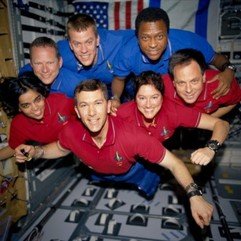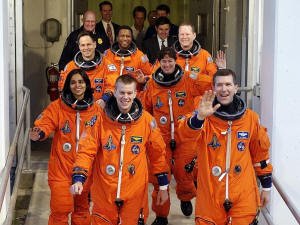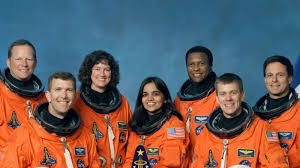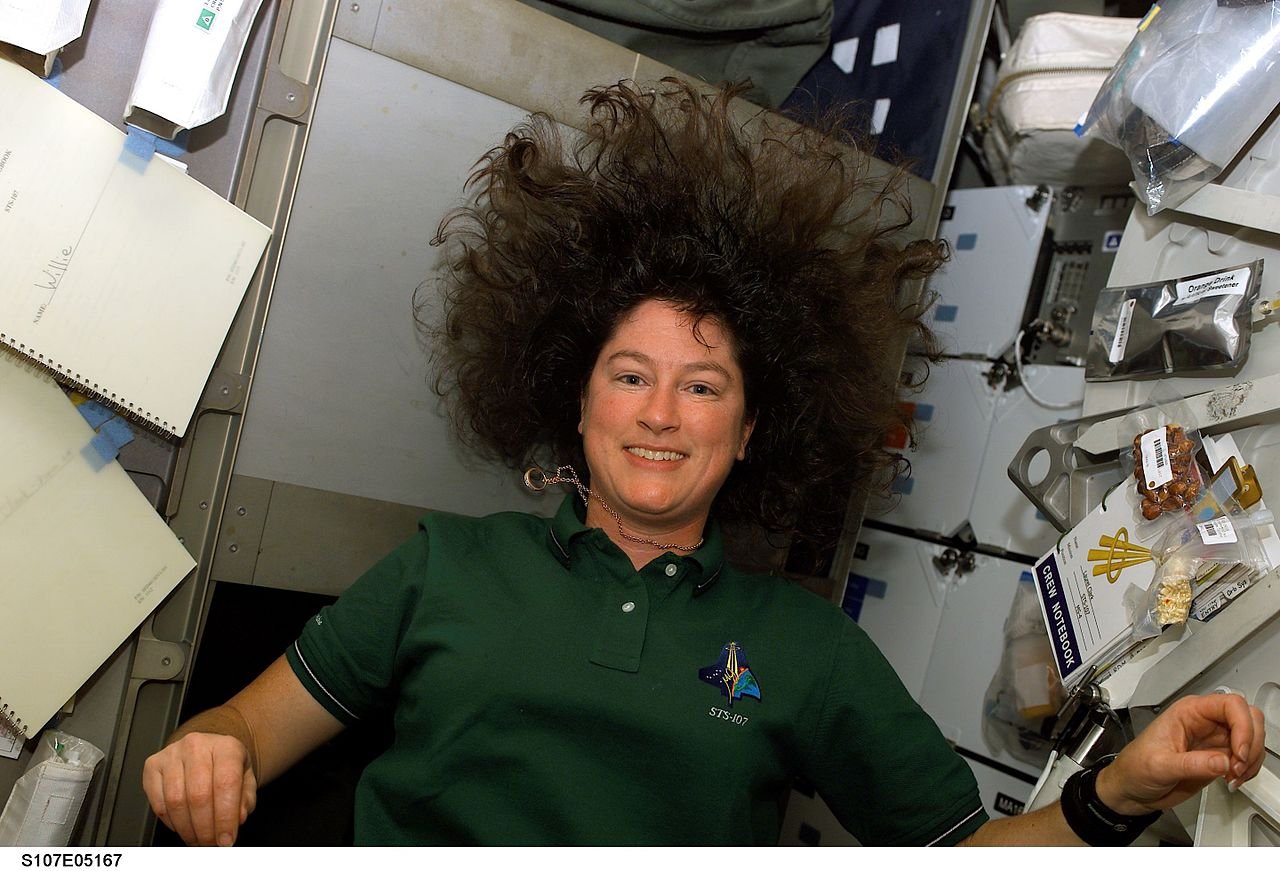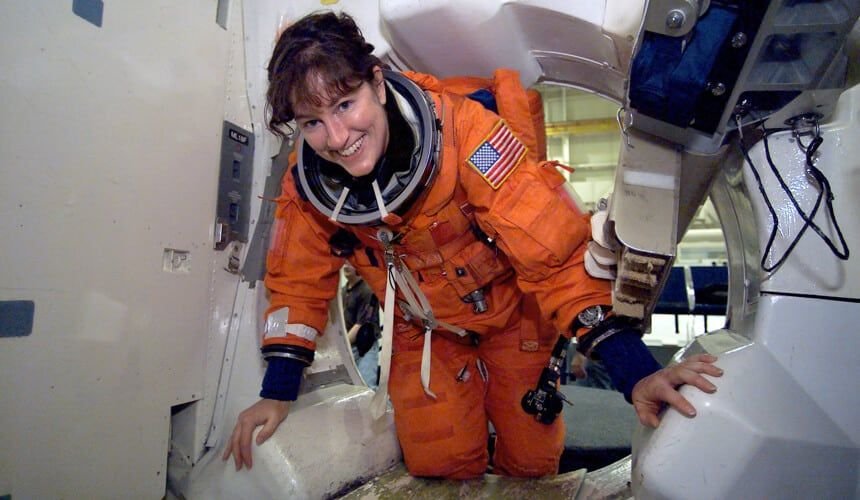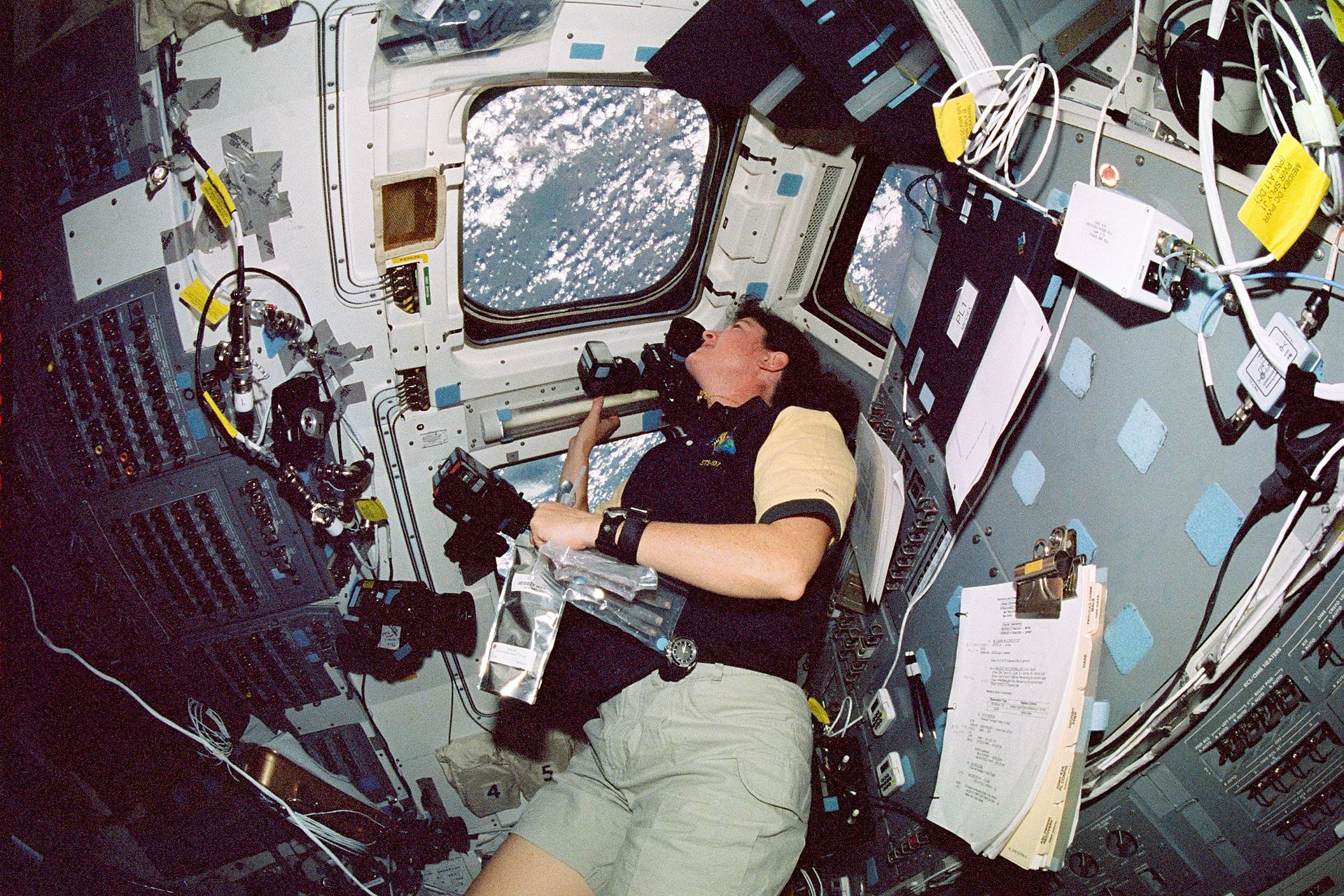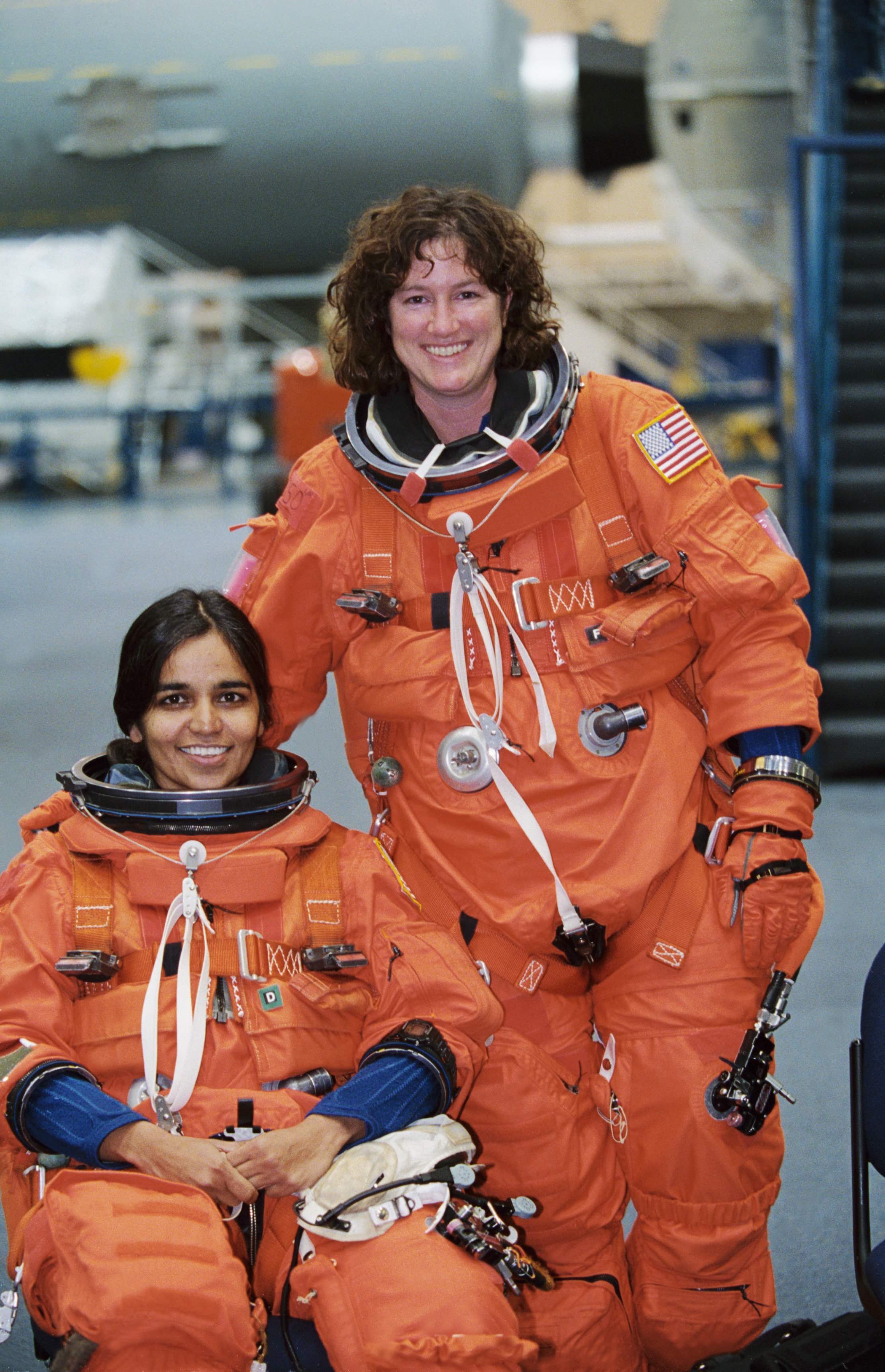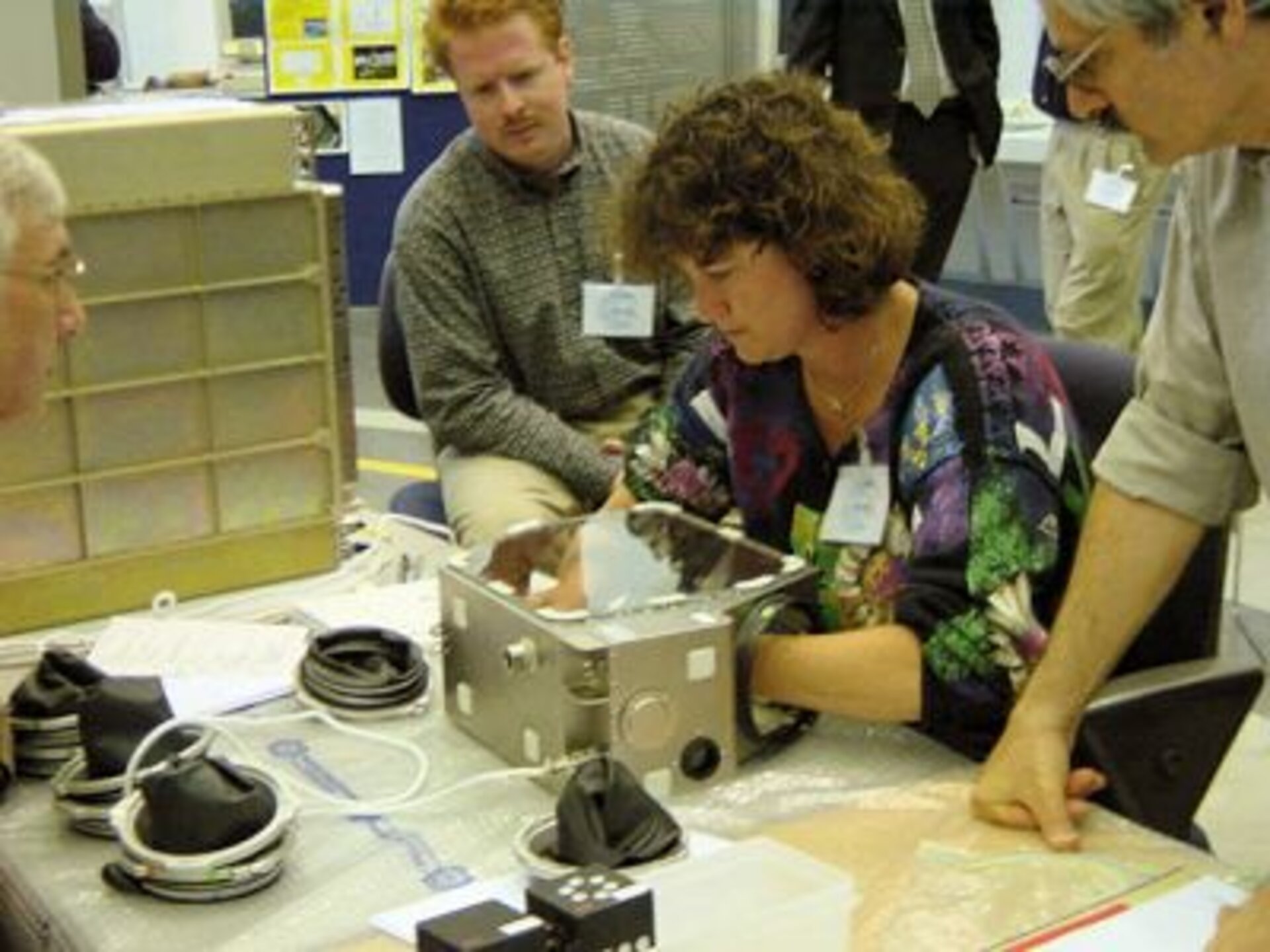Laurel Clark
Early and personal life
Clark was born in Ames, Iowa, but considered Racine, Wisconsin to be her hometown. Clark was a member of the Gamma Phi Beta sorority at the University of Wisconsin - Madison and held a Federal Communications Commission (FCC) issued Technician Class amateur radio license with the call sign KC5ZSU.
Clark is survived by her husband, fellow former U.S. Navy captain and NASA flight surgeon Dr. Jonathan Clark (who was part of an official NASA panel that prepared the final 400-page report about the Space Shuttle Columbia disaster), and son, Iain, who was born in 1996.[1][2]
Education
1979: Graduated from William Horlick High School, Racine, Wisconsin
1983: Received Bachelor of Science degree in Zoology from the University of Wisconsin–Madison
1987: Received doctorate in Medicine from the University of Wisconsin–Madison
Organizations
Clark was a member of the Aerospace Medical Association and the Society of U.S. Naval Flight Surgeons. She was also a member of the Olympia Brown Unitarian Universalist Church in Racine, Wisconsin.[3]
Military career
During medical school, Clark did active duty training with the Diving Medicine Department at the United States Navy Experimental Diving Unit in March 1987. After completing medical school, she underwent postgraduate medical education in pediatrics from 1987 to 1988 at the National Naval Medical Center. The following year, Clark completed Navy undersea medical officer training at the Naval Undersea Medical Institute in Groton, Connecticut, and diving medical officer training at the Naval Diving and Salvage Training Center in Panama City, Florida. She was designated a Radiation Health Officer and Undersea Medical Officer. Clark was then assigned as the Submarine Squadron 14 Medical Department Head in Holy Loch, Scotland. During that assignment, she dove with Navy divers and Naval Special Warfare Unit Two SEALs and performed many medical evacuations from US submarines. After two years of operational experience, Clark was designated as a Naval Submarine Medical Officer and Diving Medical Officer.[4]
Clark underwent six months of aeromedical training at the Naval Aerospace Medical Institute at NAS Pensacola in Pensacola, Florida, and was designated as a Naval Flight Surgeon. She was stationed at MCAS Yuma, Arizona, and assigned as Flight Surgeon Marine Attack Squadron 211 (VMA-211), a Marine Corps AV-8B Harrier squadron. Clark made several deployments, including one overseas to the Western Pacific, practiced medicine in austere environments, and flew on multiple aircraft. Her squadron won the Marine Attack Squadron of the Year award for its successful deployment. Clark was then assigned as the Group Flight Surgeon for Marine Aircraft Group 13 (MAG-13).
Before her selection as an astronaut candidate, Clark served as a Flight Surgeon for Training Squadron 86 (VT-86), the Naval Flight Officer advanced training squadron for tactical jets at NAS Pensacola. She was Board Certified by the National Board of Medical Examiners and held a Wisconsin Medical License, and her military qualifications included Radiation Health Officer, Undersea Medical Officer, Diving Medical Officer, Submarine Medical Officer, and Naval Flight Surgeon. Clark was also a Basic Life Support Instructor, Advanced Cardiac Life Support Provider, Advanced Trauma Life Support Provider, and Hyperbaric Chamber Advisor.
NASA career
Selected by NASA in April 1996, Clark reported to the Johnson Space Center in Houston, Texas, in August 1996.[5] After completing two years of training and evaluation, she was qualified for flight assignment as a mission specialist. From July 1997 to August 2000, Clark worked in the Astronaut Office Payloads/Habitability Branch. She flew aboard STS-107, logging 15 days, 22 hours and 21 minutes in space.[4][6]
Space flight experience
STS-107 Columbia – The 16-day flight was a dedicated science and research mission. Working 24 hours a day, in two alternating shifts, the crew successfully conducted approximately 80 experiments. Clark's bioscience experiments included gardening in space, as she discussed only days before her death in an interview with Milwaukee media near her Wisconsin hometown. The STS-107 mission ended abruptly on February 1, 2003, when Columbia disintegrated and her crew perished during re-entry, 16 minutes before scheduled landing.
Clark also recorded inside the cockpit during Columbia's descent into the Earth's atmosphere on a small digital camera.[8]
Clark's final message to her friends and family was through an email sent from Columbia.[9][10] In the released text of the email, Clark called the planet magnificent, and explained that while she spends much of the time working back in Spacehab and away from the sights of Earth, "whenever I do get to look out, it is glorious." Clark found that taking photos of the Earth was challenging, "Keeping my fingers crossed that they're in sharp focus." Clark also shared some of the intriguing effects of micro gravity on human physiology, such as constant challenge to stay adequately hydrated due to an "almost non-existent" sense of thirst.[11]
Awards and decorations
Clark was awarded numerous insignia and personal decorations including:
Qualification insignia
Personal decorations
Navy and Marine Corps Commendation Medal with 2 gold award stars (3 awards)
The † symbol indicates a posthumous award.
Tributes
Asteroid 51827 Laurelclark was named for Clark.[12]
Clark Hill in the Columbia Hills on Mars was named for Clark.[13]
L. Clark, an interior crater of the lunar crater Apollo, was named for Clark.[14][15]
Clark Hall, in the Columbia Village Suites at the Florida Institute of Technology, is named after her.[citation needed] The apartments were initially planned to be named the Crane Creek Suites, but were renamed in 2008 to commemorate the Columbia crew.[citation needed]
The Laurel Salton Clark Memorial Fountain in Racine, Wisconsin is named for her.[16]
In 2004, the Naval Aerospace Medicine Institute named its Aerospace Medicine Academic Center in Pensacola after Clark and David M. Brown[17]
Clark Auditorium at Walter Reed National Military Medical Center, Bethesda, Maryland is named for her and displays uniforms, training manuals, and personal items that belonged to her.[citation needed]
The Scottish band Runrig pays tribute to Clark on the 2016 album The Story. The final track, "Somewhere", ends with a recording of her voice.[18] Clark was a Runrig fan and had a wake up call with Runrig's "Running to the Light". She took their 2001 The Stamping Ground CD into space with her. When the shuttle exploded the CD was found back on Earth, and was presented to the band by her family.
Dr. Clark was a commander (captain-select) in the U.S. Navy and a naval flight surgeon. She is the recipient of three Navy Commendation Medals, the National Defense Medal and the Overseas Service Ribbon.
Her military qualifications included Radiation Health Officer, Undersea Medical Officer, Diving Medial Officer, Submarine Medical Officer and Naval Flight Surgeon.
Dr. Clark was a mission specialist on Columbia STS-107. This was her first spaceflight. The mission ended abruptly when space shuttle Columbia and its crew perished during entry, 16 minutes before its scheduled landing.
Laura Blair Salton Clark made the ultimate sacrifice and lost her life in service to the national and the space program on February 1, 2003 at 41 years of age.
About Space Shuttle Columbia
Space Shuttle Columbia (OV-102) was a Space Shuttle orbiter manufactured by Rockwell International and operated by NASA. Named after the first American ship to circumnavigate the upper North American Pacific coast and the female personification of the United States, Columbia was the first of five Space Shuttle orbiters to fly in space, debuting the Space Shuttle launch vehicle on its maiden flight in April 1981. As only the second full-scale orbiter to be manufactured after the Approach and Landing Test vehicle Enterprise, Columbia retained unique features indicative of its experimental design compared to later orbiters, such as test instrumentation and distinctive black chines. In addition to a heavier fuselage and the retention of an internal airlock throughout its lifetime, these made Columbia the heaviest of the five spacefaring orbiters; around 1,000 kilograms (2,200 pounds) heavier than Challenger and 3,600 kilograms (7,900 pounds) heavier than Endeavour. Columbia also carried ejection seats based on those from the SR-71 during its first six flights until 1983, and from 1986 onwards carried an imaging pod on its vertical stabilizer.
During its 22 years of operation, Columbia was flown on 28 missions in the Space Shuttle program, spending over 300 days in space and completing over 4,000 orbits around Earth. While it was seldom used after completing its objective of testing the Space Shuttle system, and its heavier mass and internal airlock made it less than ideal for planned Shuttle-Centaur launches and dockings with space stations, it nonetheless proved useful as a workhorse for scientific research in orbit following the loss of Challenger in 1986. Columbia was used for eleven of the fifteen flights of Spacelab laboratories, all four United States Microgravity Payload missions, and the only flight of Spacehab's Research Double Module. The Extended Duration Orbiter pallet was used by the orbiter in thirteen of the pallet's fourteen flights, which aided lengthy stays in orbit for scientific and technological research missions. Columbia was also used to retrieve the Long Duration Exposure Facility and deploy the Chandra observatory, and also carried into space the first female commander of an American spaceflight mission, the first ESA astronaut, the first female astronaut of Indian origin, and the first Israeli astronaut.
At the end of its final flight in February 2003, Columbia disintegrated upon reentry, killing the seven-member crew of STS-107 and destroying most of the scientific payloads aboard. The Columbia Accident Investigation Board convened shortly afterwards concluded that damage sustained to the orbiter's left wing during the launch of STS-107 fatally compromised the vehicle's thermal protection system. The loss of Columbia and its crew led to a refocusing of NASA's human exploration programs and led to the establishment of the Constellation program in 2005 and the eventual retirement of the Space Shuttle program in 2011. Numerous memorials and dedications were made to honor the crew following the disaster; the Columbia Memorial Space Center was opened as a national memorial for the accident, and the Columbia Hills in Mars' Gusev crater, which the Spirit rover explored, were named after the crew. The majority of Columbia's recovered remains are stored at the Kennedy Space Center's Vehicle Assembly Building, though some pieces are on public display at the nearby Visitor Complex.

